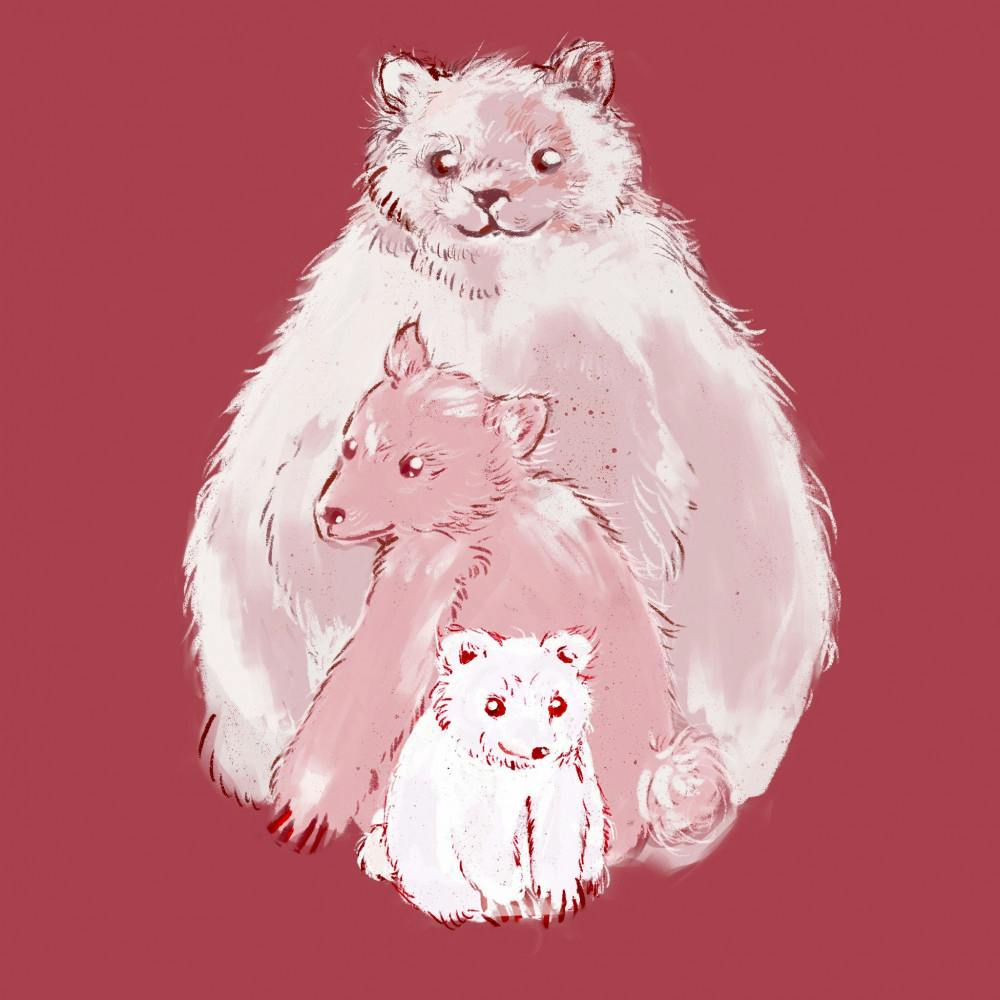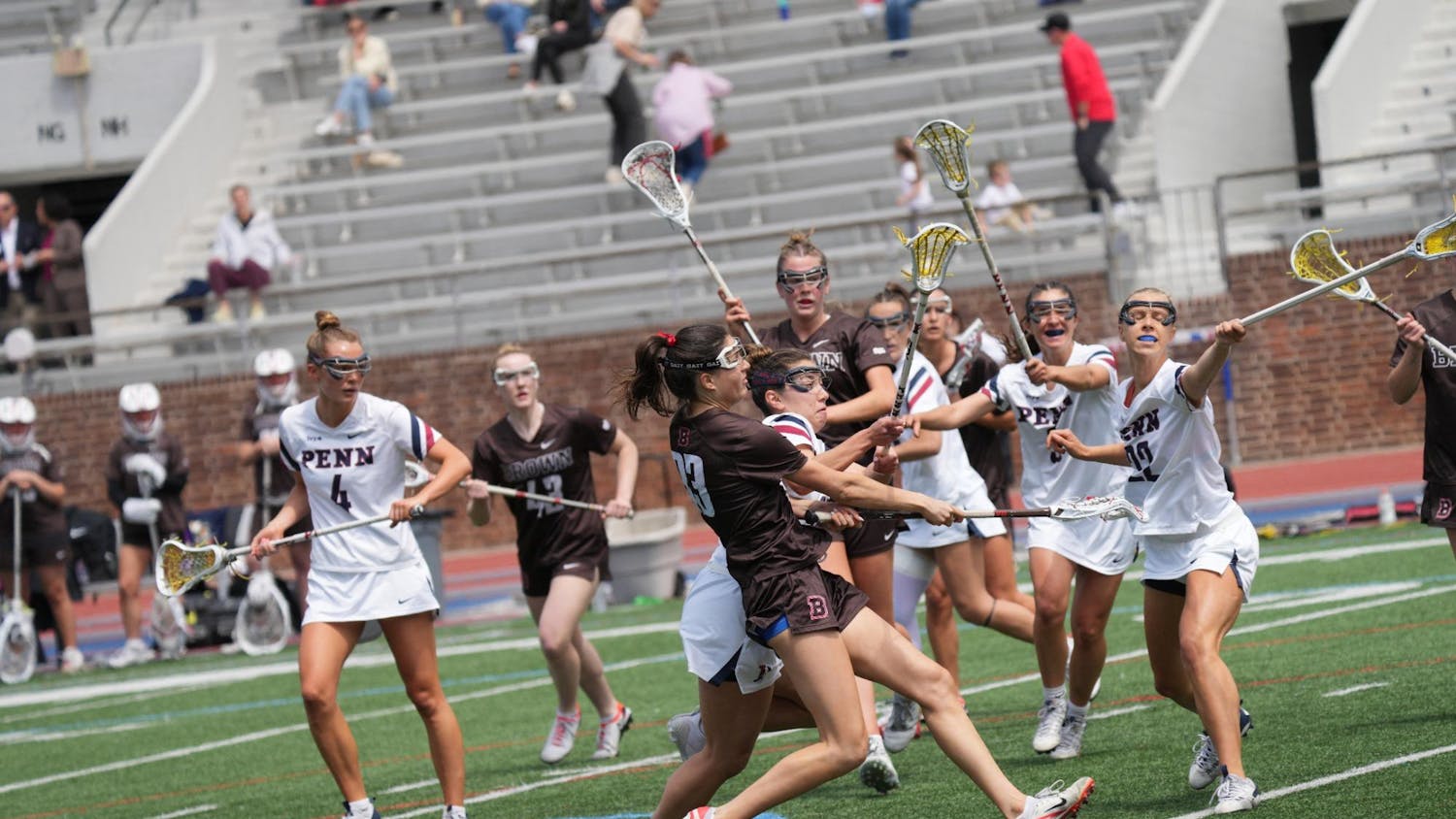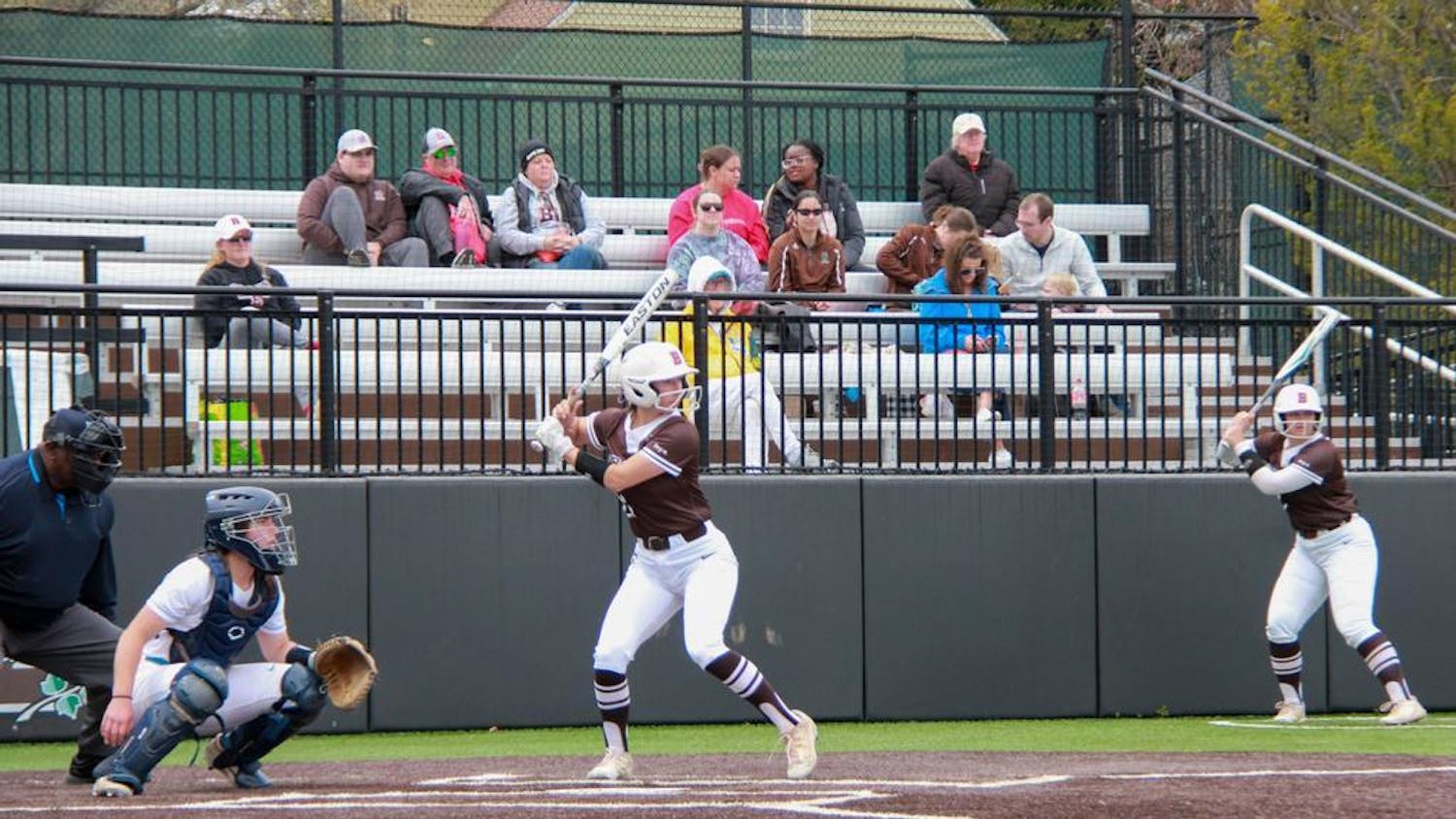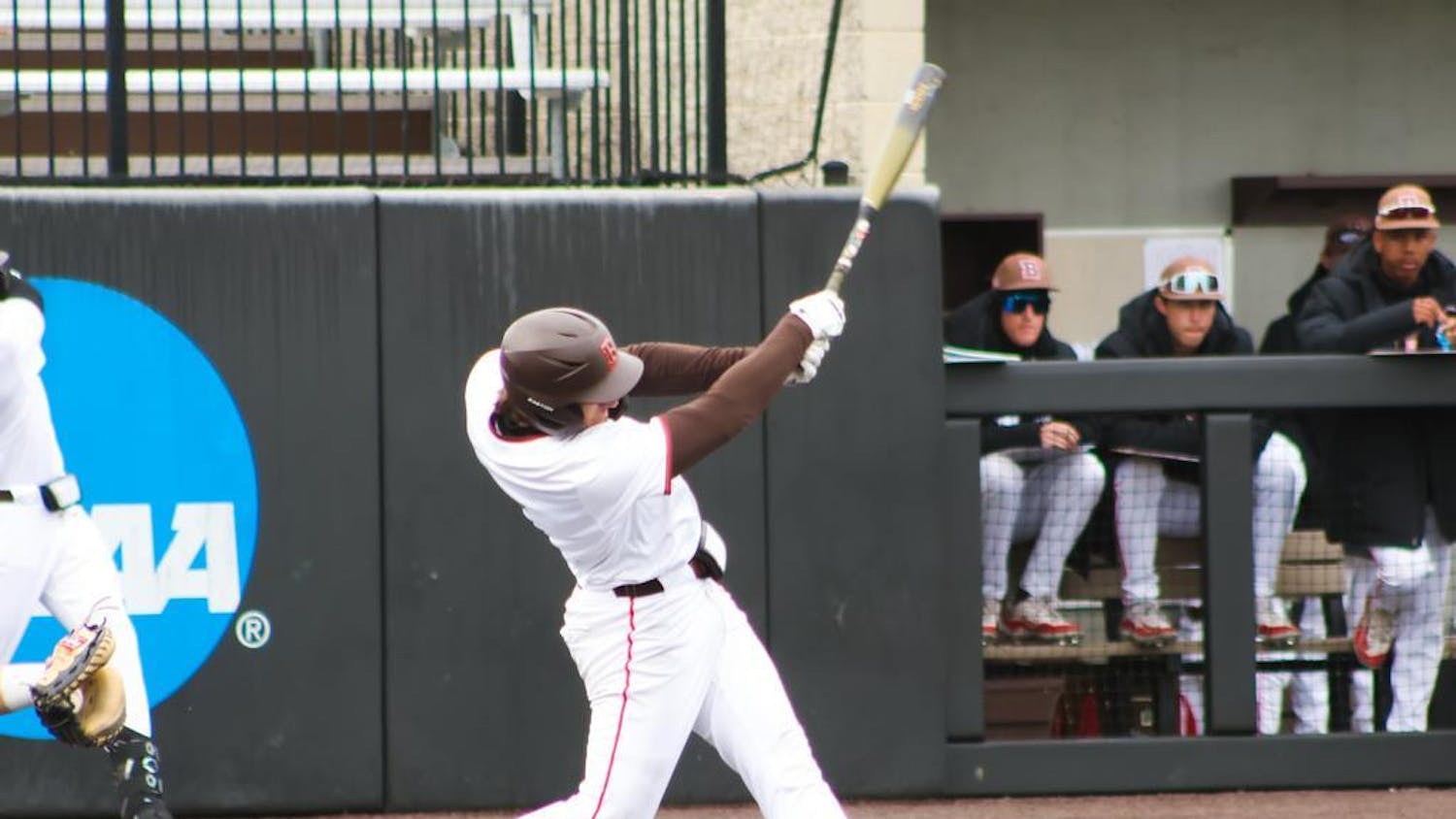At the entrance to Ittleson Quad, just past Pembroke Field and before you step into the Erickson Athletic Complex, stands a 10-foot tall bronze Kodiak bear. Indomitable, as the sculpture is officially titled, has stalwartly resided atop its four-foot pedestal since British artist Nick Bibby came to Providence for its installation ceremony in October 2013. A symbol of athletic dominance that sternly greets visiting teams and stokes pride and spirit among undergraduates and alums, Indomitable joins other representations of bears around campus that help define Brown’s identity.
Though there were earlier attempts to find a mascot — The Herald reported a “brown and white burro” representing the student body in a contest against Harvard in 1902 — the story of the Brown Bear as we know it begins in 1904 with an alum’s frustration over the fact that Brown had gone nearly 140 years without a suitable symbol for the student body.
Prompted by local press’ futile attempts to give Brown a nickname that rivaled Yale’s “Handsome Dan” bulldog and the Princeton tiger, Theodore Green, class of 1887, took it upon himself to find a symbol for his alma mater.
Settling on the bear, Green described the animal as “good natured and clean. While courageous and ready to fight, it does not look for trouble for its own sake, nor is it bloodthirsty. It is not one of a herd, but acts independently. It is intelligent and capable of being educated (if caught young enough!). It is a good swimmer and a good digger, like an athlete who makes Phi Beta Kappa,” according to Encyclopedia Brunoniana.
To formally establish the animal as Brown’s mascot, Green mounted the head of a bear in the Trophy Room in what is now part of the Stephen Robert ’62 Campus Center.
What first appealed just to Green quickly took hold in the rest of the Brown community. According to resident Brown Bear expert and University sports archivist Peter Mackie ’59, representations of Bruno the bear popped up in yearbook illustrations, student song lyrics and even on the sidelines of football games, both as a costume and in vivo.
At a match-up against Dartmouth in 1905, a live bear was first introduced to rouse crowds and cheer on the football team. This live bear tradition continued well into the 20th century.
“Our bear was probably the most famous mascot in the country,” Mackie said. “Especially in the 30s, (the live bear) was a nationally known thing.”
But the history of the University’s mascot is not unmarred. According to Encyclopedia Brunoniana, a bear kept in what was then the biology department building escaped and met its demise after consuming chemicals in 1921. Spooked by the noise of crowds in attendance at a football game, another live bear climbed up a tree and had to be rescued in 1937. Other bears that accompanied teams to away games were housed in jail cells until show-time. The 1939 funeral of another bear —“Bruno V” — drew crowds of students and faculty alike to the Main Green, after which the bear was buried in the field in front of the Nelson Fitness Complex.
The activist spirit that characterizes Brown’s larger history also defines its mascot history. In the face of student protests and Administration acknowledgment of animal rights abuses, the adoption of live bears for mascot purposes halted in the mid-1960s.
However, costumed portrayals of Bruno and Cubby — a smaller mascot who accompanied Bruno to games — continued to appear around campus at University events and games at Brown Stadium.
In addition, the renown of the live mascot prompted the creation of the first bear sculpture on campus in front of Marvel Gymnasium. Bronze Bruno remained there until 1992, when it was moved to its current home on the College Green. According to Mackie, the new placement better exemplifies the significance Green intended for the bear — it should not just serve as a rallying symbol for athletes, but as a “symbol of the Brown spirit” in its entirety.
Now, the legacy of the Brown Bear dominates life atop College Hill. The Alumni Association notably grants the Brown Bear Award to distinguished members of the Brown community for their philanthropic efforts and students use Bear Bucks to pay for laundry and food. “It’s become part of the institutional DNA,” Mackie said. “We’re all Bears in one way or another.”
The legacy of the Brown Bear even extends to the classroom, as Visiting Assistant Professor of Education Hilary Levey Friedman incorporates the mascot’s history into the syllabus of her course EDUC 0860: “Sports in American Society.” As part of the course, students learn about the history of the Pembroke Pandas, the nickname adopted by the women’s ice hockey team in 1964 before Pembroke College and the main campus merged. Friedman noted that this intertwined history of the mascot and Brown’s institutional history is “very important to cover” as it “(impacts) my own students.”
On the field today, 16 men’s and 20 women’s varsity sports teams are represented by the bear. Newly appointed head football coach and former Brown quarterback James Perry ’00 said Bruno is “definitely number one” among rival mascots. “We’ve got a few schools just going with colors, so you know we’ve got a leg up on any school that just goes with a color,” he joked, and added that his three young children “prefer the bear by a long margin” to other Ivy League animals.
Mackie shared the sentiment, pointing to the nobility of the Bear in comparison to its foes — “as an athletic mascot, who’s going to be able to out-wrestle or out-do a bear?”
While some universities have done away with their mascots — often deeming them culturally insensitive or outdated — the Brown Bear persists, and Mackie doesn’t see it going anywhere any time soon. His display on the bear, which spans eight large posters and over 100 years of history, will be in the Nelson Fitness Center over Commencement weekend.





